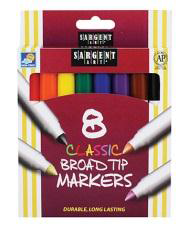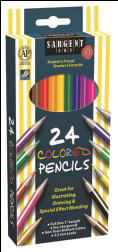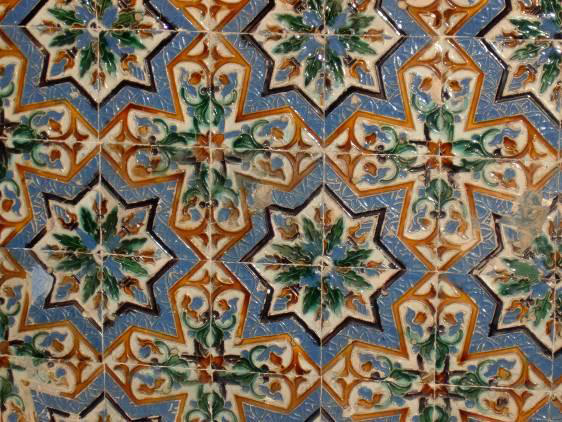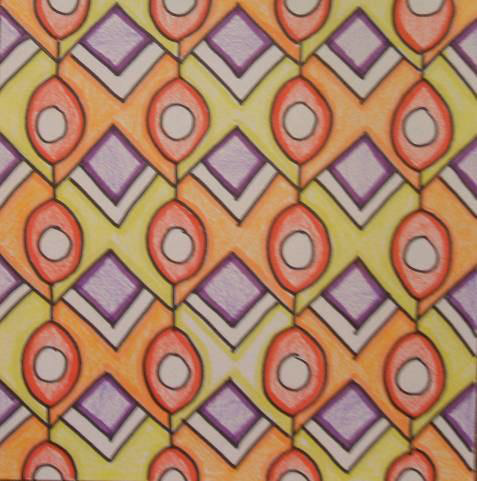A tessellation is a design that fills a space with a pattern. There are no gaps. There are no overlaps. Many beautiful tessellations are found in the Alhambra in Granada, Spain. The artist, M.C. Escher, visited the Alhambra, studied the detailed drawings of the Moorish mosaics, and created many fascinating tessellations combining math, science, and architecture.
Goal (Terminal Objective):
Students will create art works that are made from their original tessellation templates. These artworks will show students’ understanding of an art form that was created in the 14th century in Spain.
Objective:
Students will make original tessellation templates and develop detailed drawings from them using their acquired knowledge of the art form. They will incorporate ideas from the Alhambra in Granada, Spain, and from the Dutch artist, M.C. Escher.
National Standards:
Visual Arts Grades K-4 Content Standard 1: Understanding and applying media, techniques, and processes
Visual Arts Grades K-4 Content Standard 2: Using knowledge of structure and functions
Visual Arts Grades K-4 Content Standard 3: Choosing and evaluating a range of subject matter, symbols, and ideas
Visual Arts Grades K-4 Content Standard 4: Understanding the visual art in relation to history and culture
Visual Arts Grades K-4 Content Standard 5: Reflecting upon and assessing the characteristics and merits of their work and the work of others
Purpose:
Students will focus on the elements of design. They will create alluring art works using repetition of shape and color. They will learn about the art created in the Alhambra during the 14th century. The art of M.C. Escher, who studied tessellations in the Alhambra, will be introduced and his tessellations will be compared to those found in the Alhambra.
New Vocabulary:
Alhambra, tessellation, M.C. Escher, Spain, Netherlands
Materials:

#22-1530 Sargent Art Broad Tip Markers

#22-7224 Sargent Art Colored Pencils

#23-40xx 50 ct. Construction Paper Pack

#22-7244 144 ct. Graphite Pencils

#22-1566 4 ct. Assorted Fine Bullet Tip Permanent Markers

#22-0914 12 ct. Pointed Tip Student Scissors Best-Pack
Heavy gray construction paper, pencils, index cards, permanent markers, scissors, tape
Time:
3 lessons (45 minutes each)
Introduction and Motivation (Set):
- Teacher introduces students to tessellations found in the Alhambra in Spain. A brief history is given.
- Where is Spain? Students look at a world map to see the distance between Spain and the United States. Have you been to Spain? Where is Granada? What countries are near Spain?
- Students view tessellations found in the Alhambra and discuss how they were made. What designs are common? How old are these tessellations?
- Teacher introduces the tessellations of M.C. Escher. What did he learn from visiting the Alhambra? Have you seen Escher’s tessellations in newspapers and other advertising?
- Teacher introduces new vocabulary.
- Teacher asks students to think about creating an all-over design using repetition of pattern and color.
Instruction:
Lesson 1:
Teacher demonstrates making a tessellation shape from a 3” x 3” index card.
Draw two shapes within the square (one at the top and one at the left corner). Cut out the shapes. Slide the top shape to the bottom of the square and tape. Slide the left shape to the right side of the square and tape. Mark the tessellation with an X.

Lesson 2:
Following a teacher demonstration, students trace their shapes lightly onto 12” x 12” heavy gray paper. Begin in the middle of the paper and be sure to trace with the X showing. Fill in the entire paper. Younger students can then outline with permanent marker and color in the shapes, alternating colors. Older students will add detail to each tessellation shape with pencil, making sure that the design in each shape is identical. Detail can be added free hand. Outline with permanent black marker.

Lesson 3:
Teacher demonstrates outlining the tessellation shapes with colorful markers and then filling in with colored pencils. Some students may choose to allow some of the gray paper to remain uncolored. Teacher reviews color choices and repetition of color to create a balanced design.

Activities:
(1) Guided Practice:
- Students learn about the art of designing tessellations. Students watch teacher’s step-by-step demonstrations and discuss teacher exemplars.
- Students design an original tessellation drawing using Sargent Art markers and colored pencils.
(2) Independent Practice and Check for Understanding:
- Teacher circulates through the room during student work time, answering questions and offering support as needed.
- Teacher notes students’ understanding of directions and reviews with the class if necessary.
(3) Closure:
- Teacher helps students mount their tessellations on 15” x 15” white tag board. The tessellations are exhibited and students take time to evaluate their work and look at the work of classmates.
- Students discuss the importance of respect for individuality.
Evaluation:
Level One — The art work conveys good knowledge of tessellations and includes many design elements. The finished drawing is detailed with repetition of color and pattern. Craftsmanship is excellent. Student handles materials with confidence. The design shows a high degree of originality.
Level Two – The art work conveys knowledge of tessellations and includes design elements. The finished drawing is detailed with some repetition of color and pattern.
Craftsmanship is good. Student handles materials with confidence. The design is original.
Level Three — The student has made an effort to convey some knowledge of tessellation art. Some design elements are evident. The finished drawing lacks detail and repetition of color and pattern. Craftsmanship is fair. The design is original.
Level Four — The artwork does not convey knowledge of tessellation art. Design elements are not evident. The finished drawing lacks detail and repetition of color and pattern. Craftsmanship is poor. The student needs much support throughout the project. The design lacks originality.
Extension:
Teacher makes copies of M.C. Escher’s designs found in the M.C. Escher Coloring Book, by Abrams. Younger children love to color and these designs are interesting for K-4. They encourage good hand-eye coordination. This is a great book to add to an art library.
Resources:
http://en.wikipedia.org/wiki/tessellation
http://www.tessellations.org/tess-beginnings.htm
http://www.tessellations.org/tess-escher9.htm
http://www.gvsu.edu/math/students/adk/history.html
http://educ.queensu.ca/~fmc/november2001/TessIntro.htm
http://users.erols.com/ziring/escher_bio.htm
Art Consultant





